the history of yeovil's pubs
PUBS HOME PAGE |
PUBS INTRODUCTION |
PUBS BY NAME |
BEERHOUSES |
pen mill Inn
Pen Mill
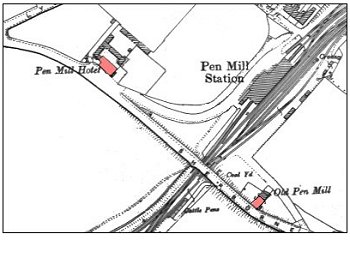 Very
little is known
about the Old
Pen Mill Inn
other than it
was originally
cottages
adjacent to the
London Road (now
Sherborne Road)
and completely
surrounded by
fields and
orchards.
Very
little is known
about the Old
Pen Mill Inn
other than it
was originally
cottages
adjacent to the
London Road (now
Sherborne Road)
and completely
surrounded by
fields and
orchards.
The will of Henry Whiffen 'of Pennmill Inn' is dated 9 February 1789 and proved on 14 May 1790. It was listed elsewhere as the Pen Mill Inn at least as early as 1828. While the 1768 reference to Thomas Daymond in the Churchwardens' accounts, below, may refer to the inn, it may refer to the fact that the regular three-day perambulation of the parish bounds stopped at Pen Mill for refreshments which were actually transported to the Pen Mill area from the town.
From notices to attend the Manorial Court in 1815, it is known that the Pen Mill Inn was also known as the King's Head Inn (see also map below) since the Court was "To be held at the house of William Jeffery known by the name of the King’s Head, Pen Mill." This was concurrent with the King's Head in High Street.
It is also known, from a list of builders' and tradesmen's charges, that the Pen Mill Inn was rebuilt between 1822 and 1823.
The building was built at right-angles to the road. There was a cottage on the right and the other half, next to the road, was a long-established cider house which became a fully-licensed public house, pre-dating the 1830 Beerhouse Act. To the rear, next to the bridge, was a coal yard for the station.
In the Yeovil Tithe Apportionment of 1846 the Pen Mill Inn and Garden (Parcel 863) were owned by Captain William J Prowse of Enham House, Southampton, son of George Bragge Prowse of Kingston Manor House and Lord of the Manor of Kingston and was occupied by Thomas Frost. Frost not only ran the inn but also farmed the surrounding area comprising some fifteen separate parcels of land. The Pen Mill In was also the de facto farmhouse of Pen Mill Farm.
Following Frost's death in 1851, the Pen Mill Inn, together with Pen Mill Farm, was re-let. A counterpart of a lease for seven years, dated 25 March 1859, between Captain Prowse and John Stone recorded the following details of the inn - "In the bar – 2 beer engines, 6 motions, 11 spirit taps, jars and piping, shelving behind and both sides of the bar, counters and seven drawers. In the pantry – shelves, cupboards and drawers, in the tap room - fixed forms, lead pipe and tap in water closet. Stables and yards, gas fittings and bells, door and fixings to the coal house and shoe house, the fowl house, the lamp over the front door and two long signboards fixed to the walls of the house."
The railway bridge built in 1860 at Pen Mill Station necessitated the raising of Sherborne Road as seen in the photograph below. Unfortunately the Pen Mill Inn was cut off from the road and lost its trade. By the time of the 1861 census, just two years later, the license had been transferred to the newly-built Pen Mill Hotel and it was described as 'Pen Mill Old Inn'. It was finally demolished around 1961 and the area is now under landscaping in the eastern corner of the Pittard's factory site. At the time of its demolition the licensing inscription was still above the doorway, bearing the name of the last licensee - George Frost - who was licensed to "brew and sell beer".
In the Description of the Enumeration District for Yeovil District 3 in the 1881 census is states "houses belonging to the Great Western Railway Company (late Pen Mill Inn)".
The Ministry of Town & Country Planning's Provisional List of Buildings of Architectural or Historic Interest of July 1948 described the building thus - "Grade III - Pen Mill Cottages - Appears on map as 'Old Pen Mill'. At one time a public house, now two cottages. Railway bridge has been built against south end bringing road level as high as eaves. Plaintile roof with stone slates at eaves, gable ends. One sash window, wood casements, one small splayed bay to ground floor. Stone architrave and hood on brackets to doorway. Lean-to at right hand end."
Thanks to Linda Dennis who sent me the following article from the Western Flying Post of 9 October 1828.
|
"On Thursday evening a quarrel took place at the Penn Mill Inn, near Yeovil, between a journeyman glover, named Allen, and an itinerant dealer in corks, named Smith, in consequence of which the former challenged the latter to a fight. Smith, who was in some degree intoxicated, was at first unwilling to comply; but, provoked by his antagonist, and urged on by his wife, he at length entered into the contest and in the second round received a blow to the neck, which, in the state of excitement arising from liquor and the anger he was in at the moment, caused instant death. A coroners inquest was held on the body on Friday evening, by Mr. Uphill, when a verdict of "Manslaughter" was returned against Allen, who has absconded." |
![]()
Thomas Frost was born about 1793 in Yeovil and he was listed as the licensee of the Pen Mill Inn as early as 1840 in the Somerset Gazette Directory. The 1841 census listed him as a yeoman living with his wife, Frances, two daughters; Elizabeth and Frances, and son George. He was still listed as the occupier of the property in the 1846 Tithe Apportionment with William Jones Prowse listed as the owner of the property (he also owned the Red House Inn on the Dorchester Road, where Thomas had been landlord in the 1830s). By the time of the 1851 census he was living next door at Pen Mill Farm and was listed as a 58-year old widower. He gave his occupation as farmer of 100 acres employing five labourers. Living with him was his 21-year old son, John, who gave his occupation as a farmer of 70 acres employing three labourers. Thomas died in the summer of 1851. In fact the 1851 census is a bit confusing - it lists Sarah Bicknell, the wife of a miller, and her family living in the Old Pen Mill Inn and in the next-door cottage, listed as the Pen Mill Inn, was Railway Foreman John White and his family (not the John White who ran the Castle Hotel in Middle Street - he wasn't even born then).
In any event Thomas' son George took over the license of the Pen Mill Inn on the demise of his father and is listed as licensee in Slater's Directory of 1852. One snippet of information that caught my eye was that in 1854 the landlord of the Pen Mill Inn, George Frost, was fined the grand sum of ten shillings for keeping his bar open until 4pm on a Sunday afternoon. George was probably the last licensee of the Pen Mill Inn and it would have been during his tenure that the road was raised resulting in the demise of the establishment as a cider house. The final two tenants listed below, John Merrick and William Webber, were simply railway workers who lived in what had been the Pen Mill Inn. (As a sidenote, William Webber moved from Yeovil to Burbage Wharf, Hampshire, and Walter, his son went to Basingstoke where he set up a garage business. The family remains in Hampshire.)
John Merrick was born around 1834 in Cirencester, the son of bailiff Charles Merrick. In the 1841 census Charles was living in Sandford Street, Cheltenham with his six children. John, at this time was aged eight. In the spring of 1858 John Merrick married Yeovil-born Eliza Hawkins in Yeovil and were to have a total of thirteen children, five of whom would predecease John. In the 1871 census the couple were living in the Pen Mill Inn with their five Yeovil-born children Jane aged 9, Kate aged 7, Frederick aged 6, Ernest aged 3, Ellen aged 2 and Arthur aged 2 months. John gave his occupation as railway pointsman. By the time of the 1881 census John had moved his family to New Town where he gave his occupation as railway switchman. With him were Eliza and seven of their children; Frederick, Arthur, Harry, Tom, Jane, Kate and Bessie. In the 1891 census John, by now aged 55, had moved his family to 21 Camborne Grove. He gave his occupation as railway signalman, Mary Jane, the eldest daughter at 25, gave her occupation as draper's assistant, Harry was an 18-year-old glove cutter as was Thomas aged 16. Bessie, aged 15, was in service and 8-year-old Rupert was a scholar. Although he had never actually been the licensee of the Pen Mill Inn, by 1901 John had become the publican at the White Horse Inn and was listed there in the census with Eliza and Rupert, by now aged 18 and an engine cleaner. There were also two boarders. John was listed as licensee of the White Horse in Whitby's 1903 Yeovil Almanack Advertiser and the 1907 Yeovil Directory. Eliza died in the spring of 1907 and in the 1911 census John, by now aged 74, was described as the inn keeper at the White Horse. Jane, now aged 44 and still single, was listed as his housekeeper. Also living with them was John's daughter Kate, under her married name of Hoare, with her four children. John Merrick died in the summer of 1911 aged 74 and from this time Jane, also known as Mary Jane, took over the license of the White Horse Inn where she was to remain until at least 1923.
gallery
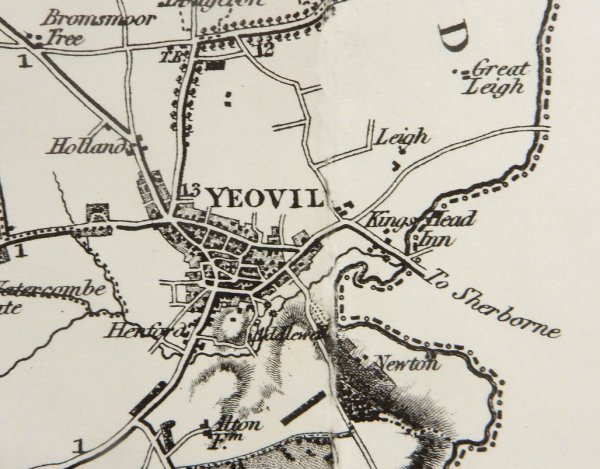
Strangely the Kings Head Inn, earlier and later known as the Pen Mill Inn, is the only licensed (or otherwise) premises named on this map of 1822 by Christopher Greenwood.
gallery
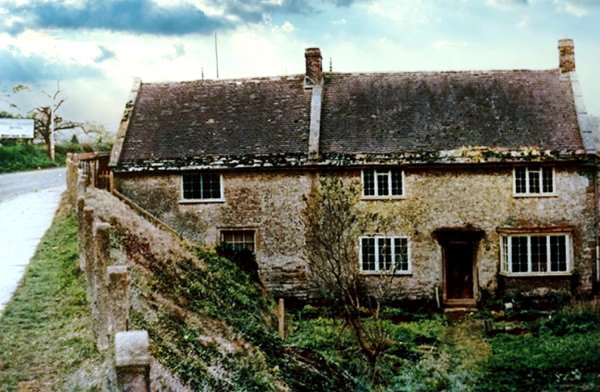
This colourised photograph
features in my
book "A-Z
of Yeovil"
That part of the building at left, the original cider house and later Pen Mill Inn, had been semi-buried like this for a hundred years!
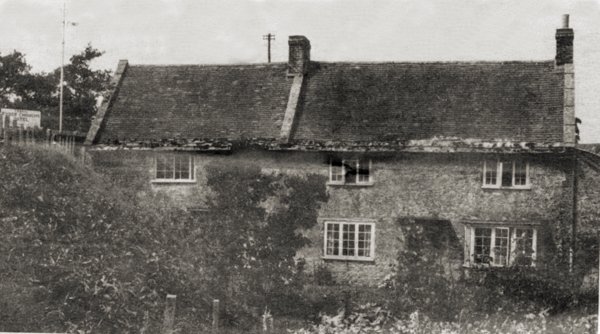
Courtesy of Viv
Cafferkey
This photograph was taken around 1960 just before the buildings were demolished.
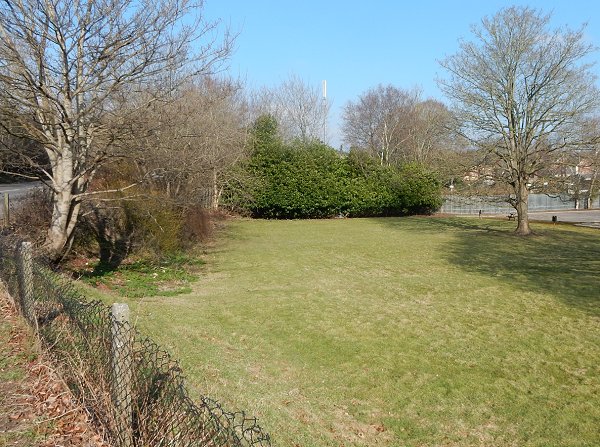
The site of the old Pen Mill Inn is indicated by the green bushes at centre. Sherborne Road is at extreme left and Pittard's factory is off-photo to the right. Pen Mill Station is beyond the fence seen at centre right. Photographed in 2016.
licensees
1768 – Thomas
Daymond "for
Liquor at Pen
Mill"
(Churchwarden's
Accounts)
1789 – Henry
Whiffen "of Pennmill Inn"
(Will of Henry
Whiffen dated
9 February 1789)
1815 – William
Jeffery (notice
to attend
Manorial Court)
known as the
King's Head
1828 – Licensee
not named
(Western Flying
Post) listed as
Pen Mill Inn
1832 – Samuel
Bengefield (1832
Register of
Voters) listed
as Pen Mill Inn
1840 – Thomas
Frost (1840
Somerset Gazette
Directory)
listed as Pen
Mill Inn
1841 – Thomas
Frost – Yeoman
(1841 census)
1842 – Thomas
Frost (Pigot’s
1842-4
Directory)
listed as Pen
Mill Inn
1842 – William
Jones Prowse,
owner – Thomas
Frost, occupier
(1842 Tithe Map)
1846 – William
Jones Prowse,
owner – Thomas
Frost, occupier
(1846 Tithe
Apportionment)
1851 – Sarah
Bicknell (1851
census) listed
as Old Pen Mill
Inn
1852 – George
Frost – Inn
Keeper (Slater’s
1852 Directory)
listed as the
Pen Mill Inn
1859 – William
Jones Prowse,
owner – John
Stone, Yeoman,
occupier
(Counterpart of
Lease)
1861 – John
Merrick –
Pointsman for
the GWR (1861
census) listed
as Pen Mill Old
Inn
1871 – William
Webber – Foreman
Porter for the
GWR (1861
census) listed
as Old Pen Mill
Inn